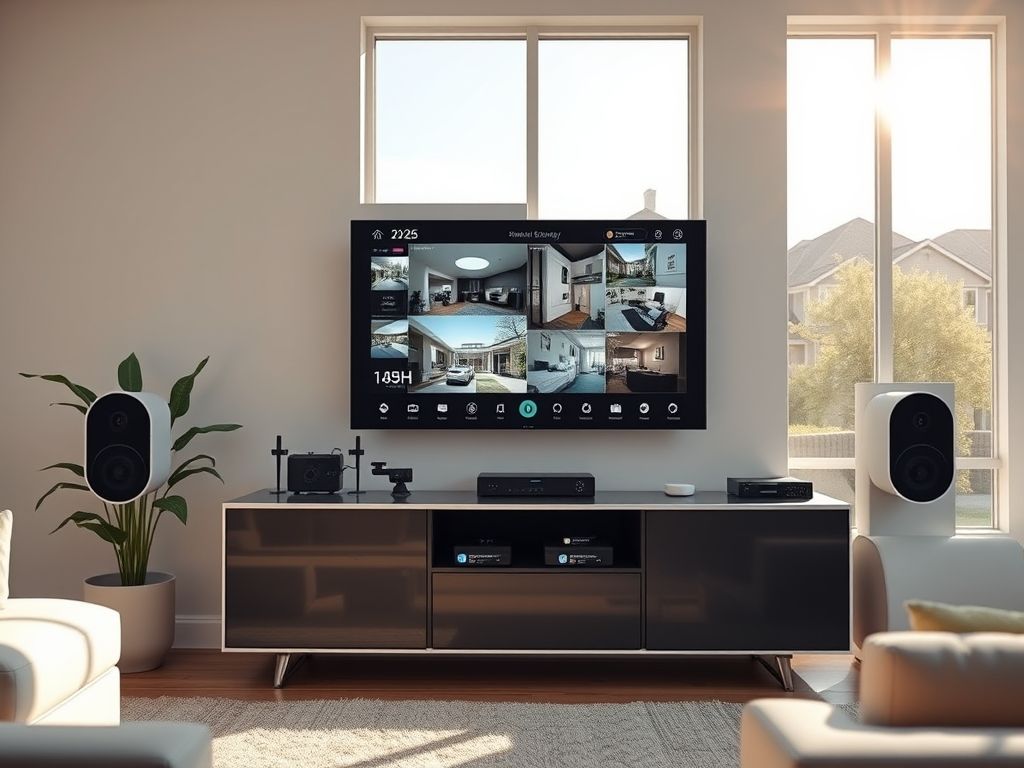The promise of a truly secure and convenient smart home continues to drive innovation and adoption in 2025. As technology advances, so do the sophistication of both smart home devices and the threats they face. Understanding the essential devices for a robust smart home security setup is more crucial than ever. This deep dive will explore the must-have components for securing your home in the age of interconnected devices, considering both technological advancements and emerging security concerns.
We’ll delve into the critical aspects of smart locks, security cameras, alarm systems, and network security devices, providing insights into their functionality, benefits, and potential vulnerabilities. Furthermore, we’ll examine the integration of these devices into a cohesive security ecosystem, emphasizing the importance of user awareness and proactive security measures. Get ready to future-proof your home with the knowledge required to navigate the evolving landscape of smart home security.
Smart Locks Evolving Beyond Keyless Entry
Smart locks have revolutionized home access, moving beyond simple keyless entry to sophisticated systems that integrate with other smart home devices. In 2025, biometric authentication, like fingerprint and facial recognition, is becoming increasingly common, adding a layer of security that traditional keys cannot match. These locks offer remote access control, allowing homeowners to grant or revoke access to visitors, service providers, or family members from anywhere in the world.
Advanced features include activity logs that track who enters and exits the home, providing valuable insights into household security. Many smart locks now integrate with video doorbells, allowing homeowners to visually verify visitors before granting access. However, the convenience of smart locks also introduces potential vulnerabilities. Security experts emphasize the importance of strong passwords and regular software updates to prevent unauthorized access. Additionally, homeowners should be aware of physical vulnerabilities, such as lock bumping or forced entry, and choose locks with robust construction and tamper-resistant features.
The integration of smart locks with other smart home devices, such as lighting and alarm systems, enhances overall security. For example, when a smart lock is unlocked, it can trigger the lights to turn on and disarm the alarm system, creating a seamless and secure entry experience. However, this interconnectedness also means that a vulnerability in one device can potentially compromise the entire system. Therefore, it’s crucial to choose devices from reputable manufacturers with strong security protocols and to regularly monitor and update the software to address any vulnerabilities.
Security Cameras The All-Seeing Eyes of Your Smart Home
Security cameras are essential for monitoring your property, providing visual evidence of any suspicious activity. In 2025, advancements in camera technology have led to higher resolution images, wider fields of view, and enhanced night vision capabilities. Wireless cameras offer flexibility in placement, while wired cameras provide a more reliable connection. AI-powered cameras can distinguish between people, animals, and vehicles, reducing false alarms and improving the accuracy of alerts.
Cloud storage is a popular option for storing video footage, allowing homeowners to access recordings from anywhere. However, it’s important to choose a cloud provider with strong security measures to protect against unauthorized access. Local storage options, such as SD cards or network-attached storage (NAS) devices, offer greater control over data privacy but require more technical expertise to set up and maintain. Ethical considerations surrounding video surveillance are also becoming increasingly important. Homeowners should be mindful of their neighbors’ privacy and avoid recording areas outside their property boundaries.
The integration of security cameras with other smart home devices, such as smart lights and alarm systems, enhances their effectiveness. For example, if a camera detects motion at night, it can trigger the lights to turn on and alert the homeowner. Many security cameras also offer two-way audio communication, allowing homeowners to speak to visitors or deter potential intruders. However, it’s important to secure your cameras with strong passwords and enable two-factor authentication to prevent unauthorized access. Regularly updating the camera’s firmware is also crucial to address any security vulnerabilities.
Alarm Systems The Central Nervous System of Home Security
Alarm systems are the cornerstone of home security, providing a comprehensive layer of protection against intrusion, fire, and other hazards. In 2025, smart alarm systems offer advanced features such as remote monitoring, mobile alerts, and integration with other smart home devices. These systems typically include a central control panel, door and window sensors, motion detectors, and sirens. Some systems also offer professional monitoring services, where a security company monitors the system 24/7 and dispatches emergency services if needed.
Wireless alarm systems offer flexibility in installation, while wired systems provide a more reliable connection. Many smart alarm systems now include environmental sensors that detect smoke, carbon monoxide, and water leaks, providing early warnings of potential hazards. The integration of alarm systems with other smart home devices, such as smart locks and security cameras, enhances their effectiveness. For example, if an alarm is triggered, the smart lock can automatically lock all doors and the security cameras can begin recording.
However, the effectiveness of an alarm system depends on proper installation, maintenance, and user awareness. Homeowners should regularly test their alarm system to ensure it’s functioning properly and educate themselves on how to respond to different types of alarms. It’s also important to choose a system from a reputable manufacturer with strong security protocols and to regularly update the software to address any vulnerabilities. Additionally, homeowners should be aware of potential vulnerabilities, such as false alarms and power outages, and take steps to mitigate these risks.

